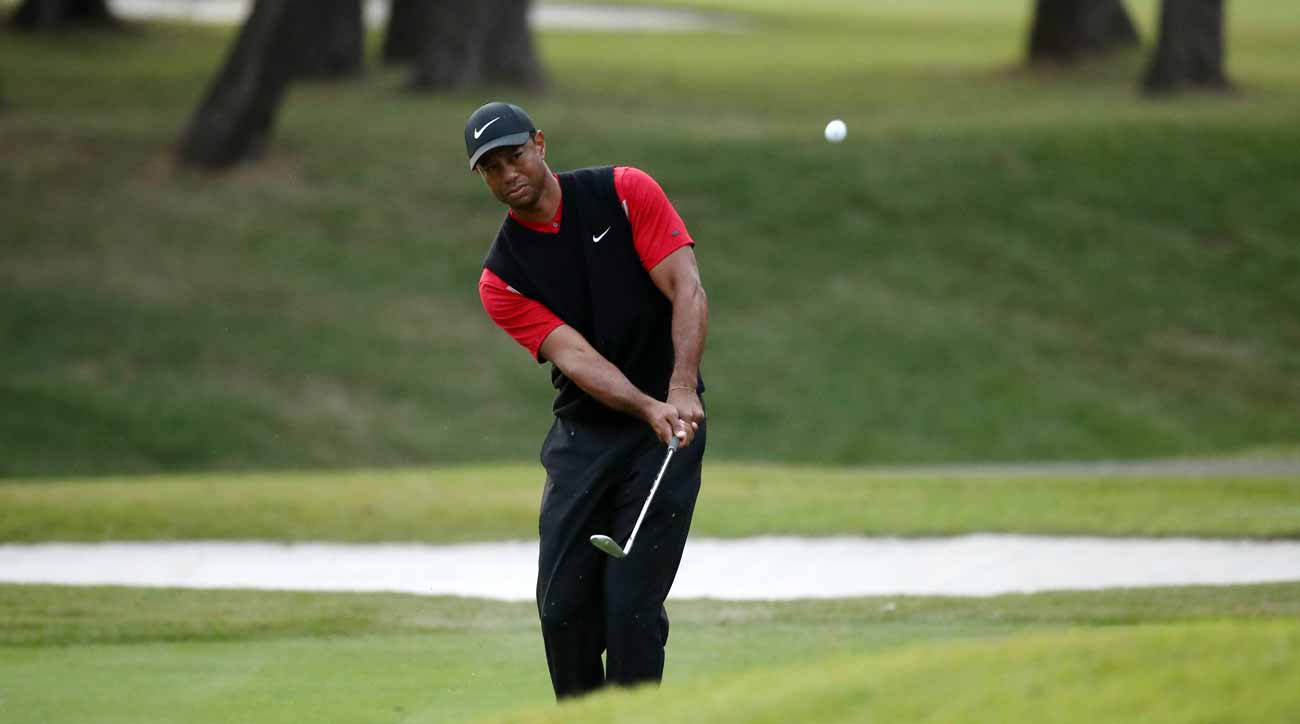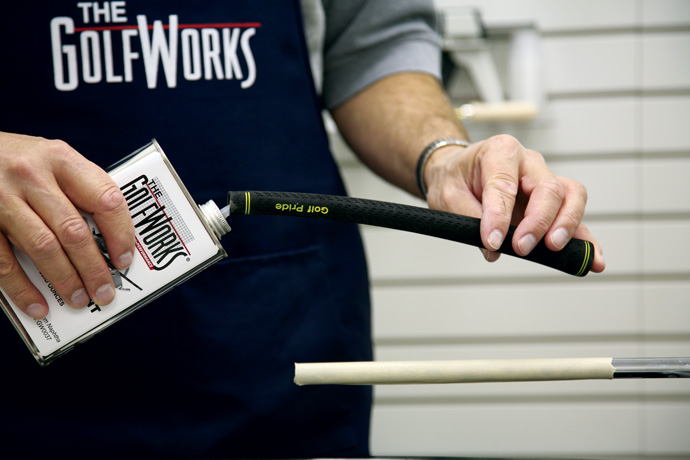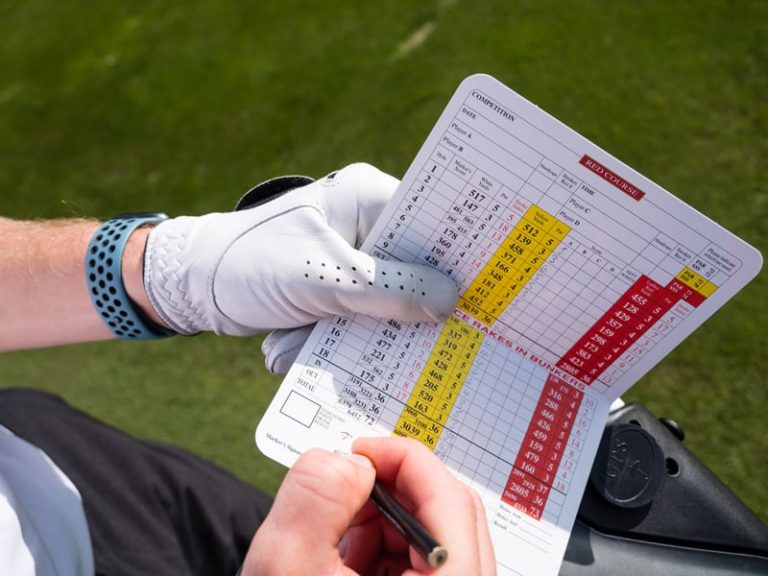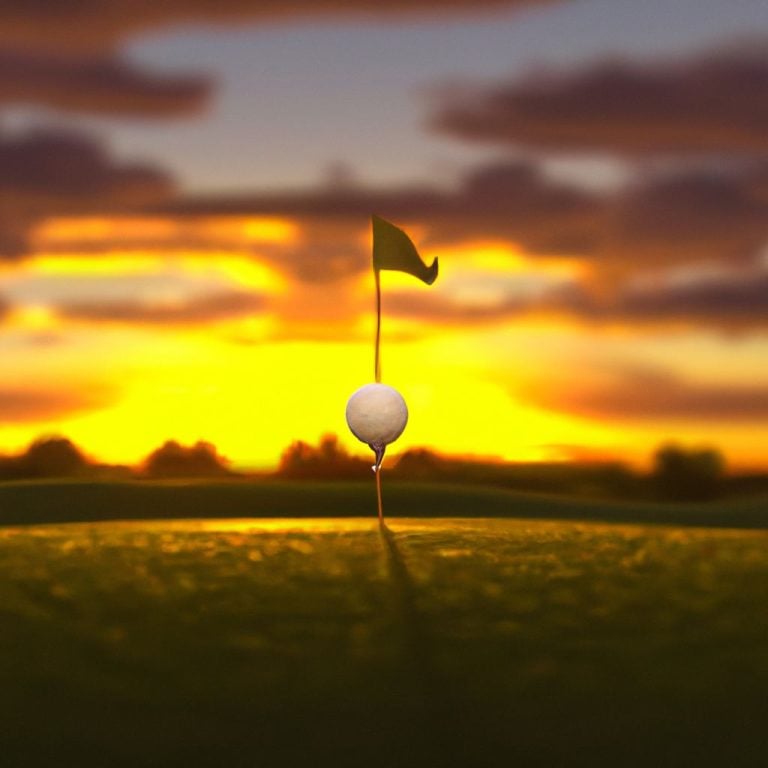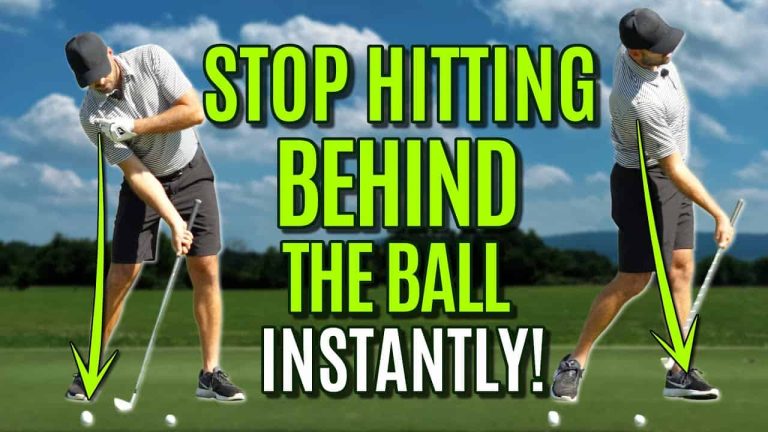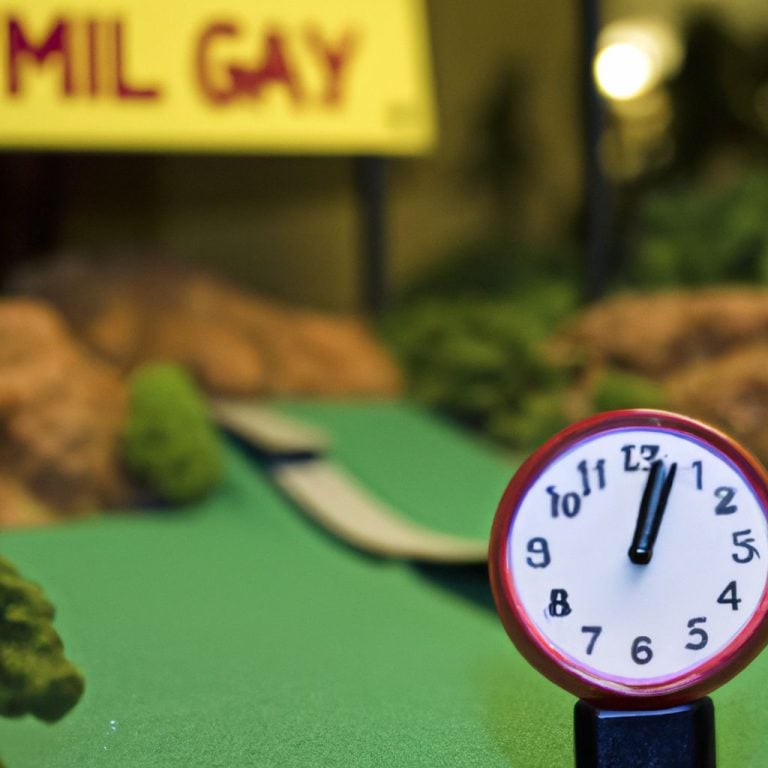How to chip a golf ball
Key Takeaway:
- Chipping in golf is an essential skill that can greatly improve your game. It allows you to effectively control the distance and trajectory of your shots around the green.
- Mastering the proper technique and posture for chipping is crucial. It involves hitting down on the ball, keeping your upper body tilted toward the target, and maintaining a quiet and intact arms and shoulder motion.
- Distance control and club selection are key factors in successful chipping. Calibrating your stroke size and understanding flight-to-roll ratios will help you choose the right club for different chipping situations.
Introduction to Chipping a Golf Ball
Chipping is a crucial skill in golf with various benefits for players. In this introduction, we will explore the importance of chipping, the benefits of improving your chipping skills, and provide an overview of the chipping technique. Discover how mastering this aspect of the game can significantly enhance your overall performance on the golf course.
Importance of Chipping in Golf
Chipping is a must-know in golf. It involves hitting the ball onto the green from a short distance away, usually with a lofted club. Chipping is important as it saves strokes and increases performance on the course.
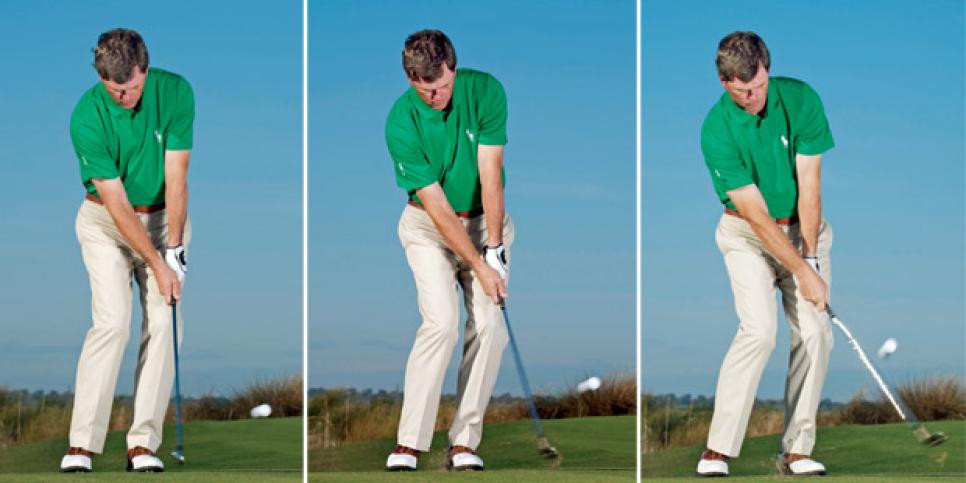
Benefits of knowing how to chip include: greater control over shots near the green resulting in improved accuracy and precision, better distance control, and shot trajectory leading to more consistent results. Also, it helps recover from difficult situations more efficiently by minimizing strokes. Plus, it boosts overall confidence and mental strength.
To learn chipping technique, basics must be grasped. This includes proper posture and setup, hitting down on the ball with upper body tilt towards the target, keeping arms and shoulders quiet, and good club position below hip level. Also, understanding ball position’s influence on shot trajectory.
Further details to explore include flight-to-roll ratios and selecting the right club for different chipping situations.
To improve chipping skills, use alignment rods, avoid mistakes, add chipping to warm-up routines, and practice feel, accuracy, and confidence.
Benefits of Improving Chipping Skills
Golfers can up their game and score higher by honing their chipping skills! Precision, control and finesse are key. Such skills bring many advantages:
- Accuracy – getting closer to the hole and saving strokes.
- Distance control – more consistent results.
- A better short game – minimising scores.
- Confidence – with the ability to execute shots with finesse and accuracy.
- Adaptability – on various surfaces such as long grass, bunkers or uneven lies.
Chipping skills benefit overall performance and competitive play, regardless of skill level or experience. So, golfers should focus on improving chipping technique for greater success!
Overview of Chipping Technique
Chipping in golf is a must-have skill. It involves making small, precise shots onto the green from nearby. It requires accuracy and finesse – and can help golfers excel on the course.
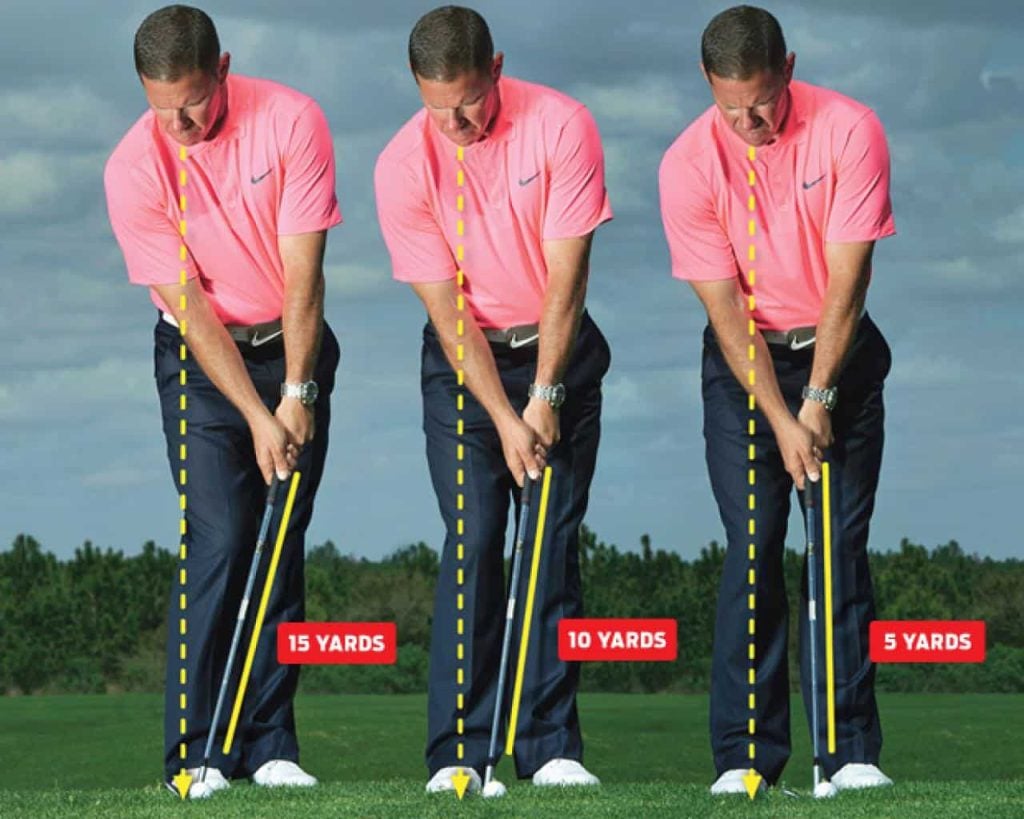
When chipping, posture and setup are key. Stand balanced, with your weight leaning slightly forward. This helps you control and direct the chip shot.
You must hit down on the ball. This creates the ideal trajectory and spin that will land it softly on the green and roll towards the hole. Plus, tilt your upper body towards the target for consistency and control.
Keep your arms and shoulders still throughout the swing. This will create a smooth, controlled motion – and make sure you hit the ball correctly. Keep the club below hip level too.
Relax your wrists. This will give you power and control. Change the ball position too – it’ll affect the trajectory.
You need to adjust your stroke size for the desired distance. Learn about flight-to-roll ratios too. Different clubs can help with various chipping scenarios – like obstacle clearance or landing zones.
Practice tips and drills can help you improve chipping. Use an alignment rod, avoid mistakes, warm up with chipping, and focus on feel, accuracy, and confidence.
For more info, read articles and instructional websites. Take lessons if needed. And look into golf improvement programs.
Chipping may be tricky – but it’s better than being stuck in a sand trap!
Understanding the Basics of Chipping
Understanding the Basics of Chipping: Discover the definition and purpose of a chip shot, the proper posture and setup for chipping, the importance of hitting down on the ball, and the significance of keeping the upper body tilted toward the target. Mastering these fundamentals will greatly improve your chipping skills on the golf course.
Definition and Purpose of a Chip Shot
A chip shot is when golfers play a short, controlled shot close to the green. It’s used when they’re too far away for a full swing but close enough to the putting surface. The goal is to get the ball onto the green and closer to the hole.
For an accurate chip shot, proper technique is key. Maintain a stable posture and weight forward. Hands should be slightly ahead of the ball. This leads to a downward strike and clean contact.
Tilt the upper body towards the target during the swing. Keep arms and shoulders steady. The clubhead should stay below hip level. This gives control and avoids too much height.
Golfers can adjust the ball position to alter the shot’s trajectory. Moving it forward will create a lower trajectory with more roll, and backward will create a higher trajectory with less roll.
Improve chipping skills with practice and dedication. Do drills during warm-up and seek professional guidance. With practice, you’ll gain confidence in controlling distance and choosing the right clubs.
Remember: correct posture is essential. Otherwise, you risk looking like a hunchback trying to chip a golf ball!
Proper Posture and Setup for Chipping
When it comes to chipping, posture and setup are essential. Stand with feet shoulder-width apart, parallel to the target line. Weight should be even. Bend knees and keep spine straight. This stance allows for proper weight transfer and balance. Tilt upper body towards target.
Position the ball nearer to the trailing foot. This encourages a descending strike for clean contact and consistent trajectory. Experiment with ball placement. Hands should be ahead of the ball, creating forward shaft lean. This allows for crisp impact and minimal spin or loft.
Grip the club with light tension in wrists and forearms. Keep arms and shoulders quiet during swing. Focus on a pendulum-like motion. Maintain natural clubhead motion, without excess tension in wrists. Follow these tips for improved performance on the green.
Importance of Hitting Down on the Ball
Hitting down on the ball is crucial in chipping. It allows for better control and accuracy. Contact with the ball on a downward trajectory imparts backspin, so the ball stops quickly upon landing. Proper technique maximizes control of distance and trajectory.
For a proper downward strike, golfers need proper posture and setup. Weight should be slightly forward and hands ahead of the ball at address. Upper body tilted toward the target throughout the swing prevents scooping or flipping of the wrists.
Good club position is also vital. The club stays below hip level, avoiding excessive wrist movement or hinging. This lets golfers achieve clean contact with the ball and avoid chunking or thinning shots.
A natural clubhead motion without tension in the wrists is essential. This enables smooth acceleration through impact and consistent strikes. Golfers use larger muscles, such as arms and shoulders, and keep wrists relatively stable.
Adjusting ball position affects shot trajectory when hitting down on the ball. Placing the ball slightly back has a steeper angle of attack and lowers ball flight. This works best to clear obstacles or stop quickly on firm greens. Experimenting with different ball positions helps golfers find what works best in various chipping situations.
Overall, proper technique in hitting down on the ball during chipping improves control of shots around the green. Focus on maintaining good posture, club position, wrist motion, and adjusting ball position for desired distance and trajectory.
Keeping the Upper Body Tilted Toward the Target
Maintain an upright stance with a slight tilt towards the target. This helps you achieve better trajectory control and accuracy in your chip shots. Here’s how to do it:
- Place your feet shoulder-width apart and slightly open to the target line.
- Have 60-70% of your weight on your front foot.
- Lean your upper body slightly towards the target.
- Keep your shoulders level and parallel to the ground.
- Stay in this position throughout your chipping motion.
This technique allows for proper weight transfer. It also produces consistent and controlled shots. To get the best results, make sure to avoid any excessive movements or tension. Relax and have a fluid motion.
You’ll also benefit from proper alignment with the clubface and intended landing area. This can help you visualize and execute accurate shots.
In conclusion, tilting your upper body towards the target is an essential part of successful chipping. It increases stability, control, accuracy, and consistency in your golf shots around greens.
Mastering the Chipping Stroke
Mastering the chipping stroke is essential for improving your golf game. In this section, we will explore key techniques that will enhance your chipping skills. From keeping your arms and shoulders intact and quiet, to maintaining a good club position and staying below hip level, we will dive into the details that will help you execute precise chip shots.
Additionally, we will focus on developing a natural clubhead motion, avoiding tension in your wrists, and understanding how adjusting ball position can impact the trajectory of your shots.
Keeping Arms and Shoulders Intact and Quiet
Maintaining stability and control in the arms and shoulders is essential for top-notch chipping. Here’s a 6-step guide to mastering this technique:
- Balance your stance: Stand with your feet shoulder-width apart. This will give you a solid foundation.
- Relax your arms and shoulders: Let them hang naturally. Avoid any tension.
- Connect arms to body: Focus on keeping them connected during the stroke. This helps your core move smoothly.
- Limit wrist movement: Keep it minimal, but enough to generate power. This ensures arm stability.
- Control shoulder rotation: Keep your shoulders square to maintain consistency and accuracy.
- Stay composed after contact: Resist any inclination to follow through forcefully. Remain composed for accuracy.
Gripping the club correctly is key. Also, understand how weight transfer and body rotation can help. Refine these elements and you’ll be a chipping pro! Keep your club low and your hopes high.
Maintaining Good Club Position and Keeping Below Hip Level
- To chip in golf, position the ball slightly back in your stance towards the back foot. This ensures a downward strike on the ball. Place the clubhead behind the ball, with hands just ahead.
- Maintain a straight line from the left shoulder to the clubhead throughout the swing. Keep arms and shoulders quiet, letting the precision of the clubface do the work.
- Focus on keeping the club below hip level during the swing. This helps ensure consistency and control, reducing mishits and inconsistencies in distance control.
To summarize: Good club position and staying below hip level is key. It aids accuracy and control while minimizing errors. Keep wrists loose and let the clubhead do the talking. Politicians’ promises are unreliable, but this technique isn’t!
Developing a Natural Clubhead Motion and Avoiding Tension in the Wrists
Golfers can improve their chipping technique by following three steps:
- Firstly, keep a relaxed grip on the club to prevent tension in the wrists.
- Secondly, focus on wrist hinge movement when chipping.
- Lastly, after making contact with the ball, follow through with a loose wrist action.
It is important to note that individual variations in chipping technique may occur due to personal playing styles or physical attributes. Professional guidance or advanced programs can help refine skills. Mastering this fundamental aspect of the game requires continued practice, experimentation, and dedication.
Adjusting Ball Position and Its Impact on Shot Trajectory
Adjusting the golf ball’s position during a chip shot has a huge effect on the shot’s trajectory. You can alter the height and roll of the shot by modifying where the ball is relative to your stance and club. This adjustment is essential for consistent, accurate chip shots.
- Good setup: When changing the ball position for trajectory, it’s key to start with the right setup. Feet should be narrower than shoulder-width apart, parallel to the target line. And the weight must be evenly balanced between both feet for a secure base during the swing.
- Ball position in relation to stance: To make the shot fly high, place the ball near your front foot, inside or slightly back from the heel. This helps you hit the ball on an ascending strike, creating more loft and height. If you want a lower trajectory and more roll, move the ball towards your back foot.
- Club selection: Different clubs create different trajectories according to their loft angles. A higher loft angle (e.g., sand wedge or lob wedge) produces higher shots with less roll. Lower shots with more roll require a less-lofted club such as an 8- or 9-iron.
- Impact on shot trajectory: Altering the ball position influences how high or low the chip shot flies, plus the amount it rolls when it lands. If the ball is positioned forward, you’ll get a higher launch angle and backspin, resulting in less roll and more control when reaching the target. Conversely, moving the ball back will give a lower launch angle and more roll distance, but possibly less accuracy.
By understanding how adjusting ball position impacts shot trajectory, you can hone your chipping technique to get the desired result with each shot. Trying out different ball positions and clubs will let you build a wide range of shots that suit different course conditions and greenside scenarios.
Picking the proper club for various chipping scenarios is like selecting the optimal weapon for a golfing battle.
Techniques for Distance Control and Club Selection
When it comes to chipping a golf ball, mastering techniques for distance control and club selection is key. In this section, we’ll explore various aspects that can elevate your game. From calibrating distance control with basic stroke size to understanding flight-to-roll ratios, we’ll equip you with the knowledge to fine-tune your chipping skills.
Additionally, we’ll delve into the art of choosing the right club for different chipping situations, ensuring you have the right equipment in your hands for every shot. So, let’s dive in and unlock the secrets to better chipping!
Calibrating Distance Control with Basic Stroke Size
Distance control in chipping is essential for success. Golfers can use stroke size to calculate the power needed for each chip shot, leading to more accurate shots. To do this, follow these three steps:
- Measure your backswing and downswing length when chipping. This will serve as a baseline.
- Practice hitting chips with varying distances, while keeping the same swing lengths. Record the yardage per swing for future reference.
- Make small changes to the backswing and downswing to hit the exact distance you want.
By calibrating distance control and practicing, golfers can sharpen their chipping skills and improve their performance on the course.
Understanding Flight-to-Roll Ratios
Golfers must understand flight-to-roll ratios to get the most out of their swings. This balance between air time and roll depends on club loft, speed, green conditions, and ball choice. A higher lofted club leads to more air time and less roll. Faster swings can provide more backspin and longer air time. Firm greens with little slope decrease roll, while soft or sloping greens allow for more roll. Different golf balls can have varying flight characteristics that can affect their flight-to-roll ratio.
Strategy is key to optimizing shots and gaining desired distance control. Practicing and developing a feel for different situations on the course is essential. Golfers must experiment with various approaches to gain confidence and improve their understanding of flight-to-roll ratios.
As an example, a golfer’s chip shots consistently fell short until they adjusted their club selection and focused on achieving the optimal balance between flight and roll. This newfound knowledge improved their distance control and overall performance on the course.
Choosing the right club for different chipping situations is like choosing the perfect weapon for a golf ball massacre!
Choosing the Right Club for Different Chipping Situations
Choosing the right club for various chipping scenarios is a must in golf. This requires pondering and studying to secure the best results. Knowing the specific club selection for each chip instance can greatly improve a golfer’s performance.
- Assessing Distance: A major factor when picking the right club for chipping is evaluating the distance required for the shot. Varying clubs have varying levels of loft, which impacts how high and far the ball will soar.
- Considering Lie: Another thought when selecting a club is the lie of the ball. If the ball is sitting on grass, a club with less loft should do. But, if it’s in a thick rough or bunker, a higher lofted club could be essential to get enough elevation.
- Evaluating Trajectory: The desired trajectory of the chip shot also plays a role in club selection. If you need to hit a low-running chip that will roll out more upon landing, an iron or hybrid with less loft may work. Or, if you want to create more height and stop quickly upon landing, a higher lofted wedge could be suitable.
- Considering Green: The condition of the green can also influence club selection. On fast and firm greens, you may choose a lower-lofted club to encourage more roll after landing. On slower greens or ones with slopes, you might prefer using a higher lofted wedge to reduce roll and increase control.
- Analyzing Hazards: When there are bunkers or water hazards around the green, judicious consideration must be given to how they will affect your club selection. You may need a higher lofted club that allows for more height and accuracy to clear these obstacles successfully.
- Personal Preference & Practice: Lastly, personal preference and practice play a huge role in club selection. Players may favor a certain club or technique for certain types of chip shots based on their experience and comfort level. Practicing with different clubs can help refine this decision-making process.
Time to brush up your chipping proficiency – ‘close’ only matters in relationships, not golf!
Tips and Drills to Improve Chipping Skills
Looking to up your chipping game? This section dives into practical tips and drills that will enhance your chipping skills. Discover how practicing with an alignment rod can improve your setup and accuracy. Learn how to avoid common chipping mistakes and incorporate chipping into your warm-up routine. Find out how to develop a strong sense of feel, accuracy, and confidence in your chipping game. Get ready to elevate your short game to new heights!
Practicing with an Alignment Rod for Setup and Accuracy
An alignment rod is a great tool for golfers aiming to improve their chipping precision and setup. Practicing regularly with an alignment rod can help you refine your chipping skills, while also helping you form correct body alignment and club positioning practices.
Start by placing the alignment rod parallel to the target line. Put it a few feet ahead of you, perpendicular to your desired target line. This guides you in achieving the right alignment.
Position your body and club with the rod. Place your feet shoulder-width apart, parallel to the rod. This assists in achieving the right posture, balance, and alignment. Hold your club so that it is parallel to the rod, running from your hands down to the ball. This ensures the clubface is pointing towards the target line.
Practice the setup. Set up as if you were about to chip, using the alignment rod as your guide. Keep your weight slightly favoring your front foot, with a slight tilt towards the target. Make sure your lower body stays still, while your upper body can move.
Continue to repeat and refine. Practice chipping with the alignment rod, focusing on keeping the correct setup position and accuracy. Begin with shorter chips, then progress to more difficult ones as you become more comfortable. Regular practice will help you build muscle memory and consistency in your chipping game.
By practicing consistently with an alignment rod for setup and accuracy, golfers can sharpen their chipping skills and create proper body alignment and club positioning habits. This drill offers an easy yet effective way to better your chipping technique and boost your overall performance on the golf course.
Keep in mind, consistent practice and determination are essential for mastering this game.
Avoiding Common Mistakes in Chipping
Chipping is a key golf skill that requires accuracy. To master it, one must understand and avoid common errors. By doing so, golfers can improve their technique and up their chances of success.
- Poor posture and alignment: This is a common mistake. To have better control of the clubhead, you need to maintain a slight bend in your hips and knees.
- Too hard or soft: Finding the correct power is tricky. Don’t make the mistake of too hard or too soft. Practice and experiment to find the right force for different chip shots.
- Wrong club: Using the wrong club is another mistake. Consider factors like distance, lie, and green obstacles before selecting the club.
- Rushing the stroke: Don’t rush through the chipping stroke. Take time to set up, maintain tempo, and follow through.
- No short game practice: Some golfers neglect short game skills like chipping. To avoid this error, practice regularly.
- No visualization: Visualizing each chip shot helps prevent mistakes. Imagine the trajectory and landing spot to make better decisions.
By being aware of errors and avoiding them, chipping skills can be improved. Patience, regular practice, and focus on technique lead to better performance.
Pro Tip: When practicing chipping, simulate real-game conditions with different scenarios and obstacles. This will help develop adaptability and decision-making skills.
Chipping in your warm-up is like spicing up your morning coffee.
Incorporating Chipping Into Warm-Up Routine
Chipping is an essential part of golf training, and warming-up the muscles and practicing techniques can improve performance. Dedicating time to this will up accuracy, control, and confidence in shots. Here is a 3-step guide:
- Start right – feet shoulder-width apart, tilt the upper body to the target, and position the ball slightly back.
- Use an alignment rod – place it on the ground and use it as a guide when practicing chip shots. Helps ensure the clubface is square at impact and helps with consistent ball striking.
- Increase difficulty – focus on shorter chips, low-lofted clubs, then move to longer chips, higher-lofted clubs. This challenges chipping skills and prepares for various in-game situations.
Incorporating chipping into warm-ups should not be limited to just before playing – practicing chip shots regularly leads to long-term improvement. Research has shown warm-up exercises can positively influence shot performance and golf improvement.
Great chipping is like having trust issues – always aim for the target, but never fully commit.
Utilizing Feel, Accuracy, and Confidence in Chipping
Combining feel, accuracy, and confidence is key for chipping in golf. These elements affect shot success hugely.
- 1. Feel: Knowing how to read conditions like ground softness, grass height, and obstacles or slopes around the green is necessary for adjustments.
- 2. Accuracy: Striking the ball cleanly and precisely towards the target requires proper club control, swing mechanics, and judging distance.
- 3. Confidence: Trusting in abilities is vital for executing shots without hesitation. This lets golfers focus on technique, leading to smoother swings and better performance.
Golfers can enhance their game by analyzing shot factors with a heightened sense of feel. This helps with club selection, shot strategy, and execution. Also, honing accuracy through practice ensures clean contact and precise ball control.
It’s important to note that mastering these skills may take time. Seeking guidance from professionals or instructional resources is recommended. Plus, experimenting with different approaches will help golfers find their style.
By focusing on feel, accuracy, and confidence in chipping during practice and gameplay, golfers can improve their performance on the greens.
Additional Resources and References for Chipping
Discover additional resources and references that can enhance your chipping skills in golf. From recommended articles and instructional websites to seeking professional guidance and lessons, as well as exploring advanced programs for overall golf improvement, this section provides a wealth of valuable information to help take your chipping game to the next level.
Recommended Articles and Instructional Websites
Recommended articles and instructional websites are valuable if you want to get better at chipping. They provide info and instructions for various techniques, drills, and tips to help your chipping. Access them to learn from experts and understand the fundamentals and nuances of chipping. Plus, you can get visual aids like videos or diagrams for better understanding and application.
- Articles: Many articles online share topics related to chipping. They may discuss strategies to improve distance control, club selection, or posture and setup. Also, they may cover mental aspects of chipping, to develop confidence and focus during shots. In general, these articles serve as educational tools for guidance on different aspects of chipping.
- Instructional Websites: Websites specialized in golf offer resources to enhance chipping skills. Step-by-step guides with images or videos show proper technique and form. They may have interactive drills or practice routines to help refine chipping abilities. Use these instructional websites to access learning materials designed for improving performance.
- Tutorial Videos: Tutorial videos on platforms like YouTube or specialized golf instruction websites are helpful. They show professional golfers or instructors demonstrating technique while explaining key concepts. You can gain practical insights into proper execution and nuances of the stroke by watching and listening.
- Books: Books written by experienced golf professionals cover chipping extensively. They may include setup, swing mechanics, shot trajectory, and landing distance. Plus, they have practice drills and exercises to help develop skills further. Books offer an in-depth exploration of chipping, making them a valuable resource.
If you prefer more interactive learning, get guidance from professional instructors or attend golf lessons. Personalized instruction allows you to receive customized feedback and guidance based on your individual needs and skill level. Instructors evaluate technique and offer adjustments or drills to address weaknesses.
Remember, online resources and instructional materials are helpful, but hands-on practice and experimentation are essential for improvement. Incorporate knowledge from articles, websites, videos, books, or lessons into practice sessions to gradually improve your chipping proficiency.
Seeking Professional Guidance and Lessons
Golfers can benefit from taking professional lessons. Experts can give advice on the correct posture and setup for chipping. They can show how to keep arms and shoulders still and a natural clubhead motion, without tensing wrists.
Instructors can help golfers calibrate their distance control. They also help with the right club selection for different chipping situations. It’s based on desired trajectory, ball lie, and green conditions.
It’s beneficial for both beginners and experienced golfers. It gives the chance to improve, with personalized feedback from knowledgeable instructors. They can see areas for improvement in technique.
Exploring Advanced Programs for Overall Golf Improvement
Exploring advanced programs for golf improvement is a must for those dedicated to honing their skills. Seeking extra resources and guidance is a must to achieve this goal.
Start by delving into recommended articles that give valuable insights and techniques. Instructional websites can also help, offering tips on how to improve the game.
Additionally, explore advanced programs that specialize in golf improvement techniques. These programs offer strategies and training methods to reach full potential. Taking advantage of these resources can help golfers make notable strides and see improvement.
It’s worth noting that seeking professional lessons can be a big help in refining chipping abilities and overall performance. Professionals can give personalized guidance and expert advice to help golfers overcome challenges and maximize potential.
A good chip can save strokes and greatly contribute to your game. However, a bad chip can ruin a day. Invest time and effort into exploring advanced programs to consistently enhance skills and have a more rewarding experience.
Conclusion and Summary
The conclusion and summary of our discussion on chipping a golf ball brings together the key points, benefits of practice, encouragement to experiment, and highlights the impact it has on overall golf improvement.
Recap of Key Points in Chipping
Chipping is a must-have golf skill. Mastering the key points will make a golfer’s performance soar.
- First, good posture and setup are crucial. This includes a balanced stance, proper club grip, and correct ball positioning.
- Next, hit down on the ball. This launches it up and helps control its path and distance.
- Also, keep the upper body tilted toward the target while chipping. This ensures consistent contact and a smooth stroke.
- Focus on posture, hitting down, and tilting the upper body. With this, golfers can chip with accuracy and control.
Practice and dedication in chipping will make opponents envy your prowess!
Benefits of Regular Practice and Dedication
Consistent practice and commitment to chipping can produce great rewards for golfers. It can help to refine technique, control, and general performance on the golf course. With dedication and effort, golfers can hone their chipping skills and gain an upper hand.
- Enhanced Technique: With regular practice, golfers can create a reliable and successful chipping technique. By frequently executing chip shots, golfers can develop swing mechanics, club positioning, and ball contact. This leads to better accuracy, control of distance, and shot trajectory.
- More Confidence: Dedicated practice gives golfers confidence in their chipping. As they see growth in their performance, they become more confident in executing chip shots during actual game play. Confidence is key to maintaining composure and making successful shots during pressure-filled situations.
- Heightened Consistency: Regular practice assists golfers to gain consistency in their chipping. By spending time practicing various scenarios and changing club selection based on different chipping situations, players can consistently perform reliable chip shots across various conditions on the course.
Apart from these benefits of practicing and dedicating yourself to chipping, it is essential for golfers to keep striving for improvement via ongoing training programs or coaching from professionals. By repeatedly refining technique and strategies, golfers can reach advanced levels of performance and accomplish more success on the course without depending too much on natural talent or physical ability.
Experimenting with your chipping style is like finding the perfect golf club – it may take some time, but when you find the one that suits you, it’s pure golf magic!
Encouragement to Experiment and Find Personal Chipping Style
Golf encourages players to find a personal chipping style. Experimentation helps them discover the techniques that work best for their abilities and preferences. Through trial and error, golfers can refine their chipping skills. Taking the time to experiment helps players find a unique style of chipping which maximizes accuracy and consistency.
When it comes to personal chipping style, golfers should explore different aspects. This includes experimenting with grips, stances, and club positions. Players can also try different chips shots, like low runners or high lobs, to see which work best for them. The goal is to find the style which allows them to successfully execute chip shots.
Furthermore, experimentation helps golfers develop a deeper understanding of the game and their own abilities. It encourages creative thinking for each shot and explores different strategies. With an experimental mindset, golfers can continuously evolve and improve their chipping skills.
Final Words on the Impact of Chipping Skills in Golf Improvement
Chipping skills are important for bettering your golf game. They alter the path and distance the ball travels, leading to improved results. To reach a competitive edge and improve performance, mastering the chipping technique is key.
Posture and setup are key. Hitting down on the ball with an upper body tilt to the target is essential. A natural clubhead motion should be developed while keeping the wrists relaxed.
Distance control and selecting the right club are also important. Through stroke size, golfers can calibrate their distance control. They must also learn flight-to-roll ratios to know how far the ball will go. Choosing the right club for different situations is vital.
Tips and drills should be incorporated into practice routines. An alignment rod can help with accuracy. Avoiding common mistakes is necessary for consistent performance. Warm-up routines can also help with feel, accuracy and confidence.
Extra resources like articles and instructional websites can offer helpful insights. Professional lessons and specialized programs offer comprehensive approaches to golf improvement.
In summary, chipping skills have a major influence on golf improvement. Mastering the basics, such as posture, setup, hitting down and a natural clubhead motion, is essential. Distance control and club selection are also important. Tips, drills, extra resources and professional guidance can enhance chipping skills and golf performance.
Some Facts About How To Chip a Golf Ball:
- ✅ Chipping is a simple way for golfers to improve their score and build confidence. (Source: Team Research, Golf.com)
- ✅ Good golf posture and adjusting the stance and setup can significantly improve chipping technique. (Source: Team Research, Golf.com)
- ✅ Hitting down on the ball and keeping the upper body tilted toward the target are important for a successful chip shot. (Source: Team Research, Golf.com)
- ✅ Developing feel, avoiding tension in the wrists, and adjusting ball position can improve chipping control and trajectory. (Source: Team Research, Honest Golfers)
- ✅ Practicing with alignment rods, understanding flight-to-roll ratios, and including chipping in warm-up routines can enhance accuracy and confidence in chipping. (Source: Team Research, Toftrees Golf)
FAQs about How To Chip A Golf Ball
FAQ: How to Chip a Golf Ball
Q: What is the proper stance for chipping a golf ball?
A: The proper stance for chipping involves standing with feet shoulder-width apart and weight evenly distributed. The head should be kept still, and the chest should be up throughout the swing.
FAQ: How should I position my feet when chipping a golf ball?
Q: Should my feet be parallel when chipping?
A: Yes, your feet should be placed closely together with a space equivalent to one foot between them. It is important to align your feet parallel and aimed forward.
FAQ: What is the recommended chipping technique?
Q: How should I chip a golf ball for optimal results?
A: The entire upper body should be used to facilitate the chip, and the initial contact with the ball should be a downward strike. The club should be raised as it makes contact with the ball to give it the required loft.
FAQ: How can I improve my chipping skills?
Q: What are some tips for improving my chipping technique?
A: It is recommended to take lessons from a golf instructor and practice regularly. Using an elongated club or a pool stick can help with footing and stance. Practicing phantom swings without hitting the ball can also be beneficial. Experimenting with different chipping stances is encouraged to find one’s personal style.
FAQ: Which club should I use for chipping?
Q: What is the ideal club choice for chipping a golf ball?
A: Pitching wedges are commonly used for chip shots due to their balance between trajectory and rollout. However, the choice of club depends on the golfer’s judgment and the specific circumstances.
FAQ: Is chipping a valuable skill in golf?
Q: How important is chipping in the game of golf?
A: Chipping is an essential skill in golf that can help golfers navigate tricky situations and improve their scores. It is considered one of the most valuable skills in a golfer’s arsenal.
